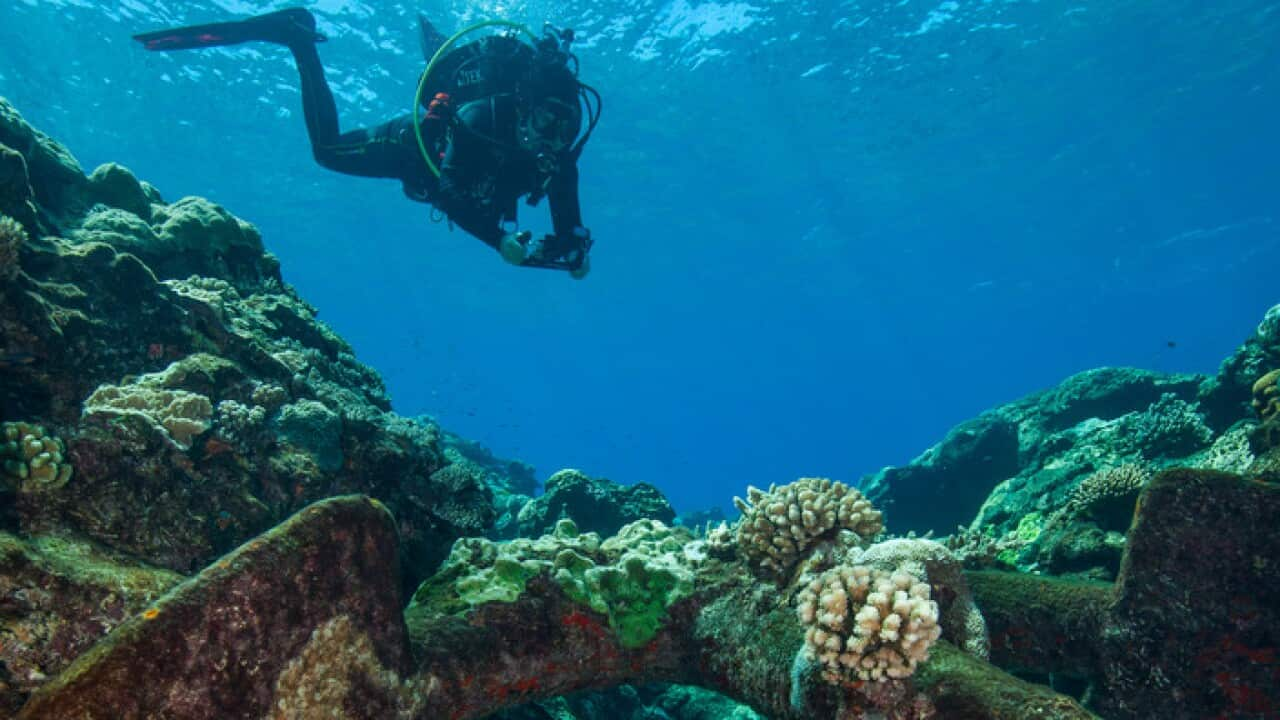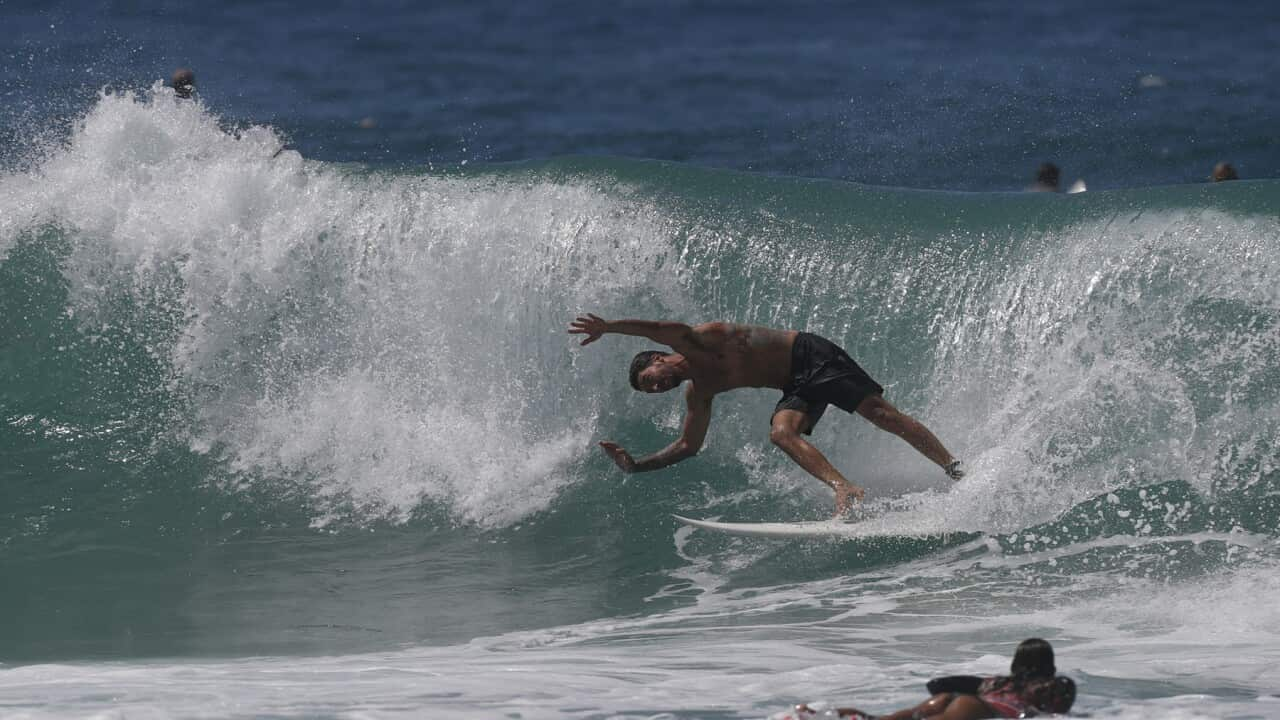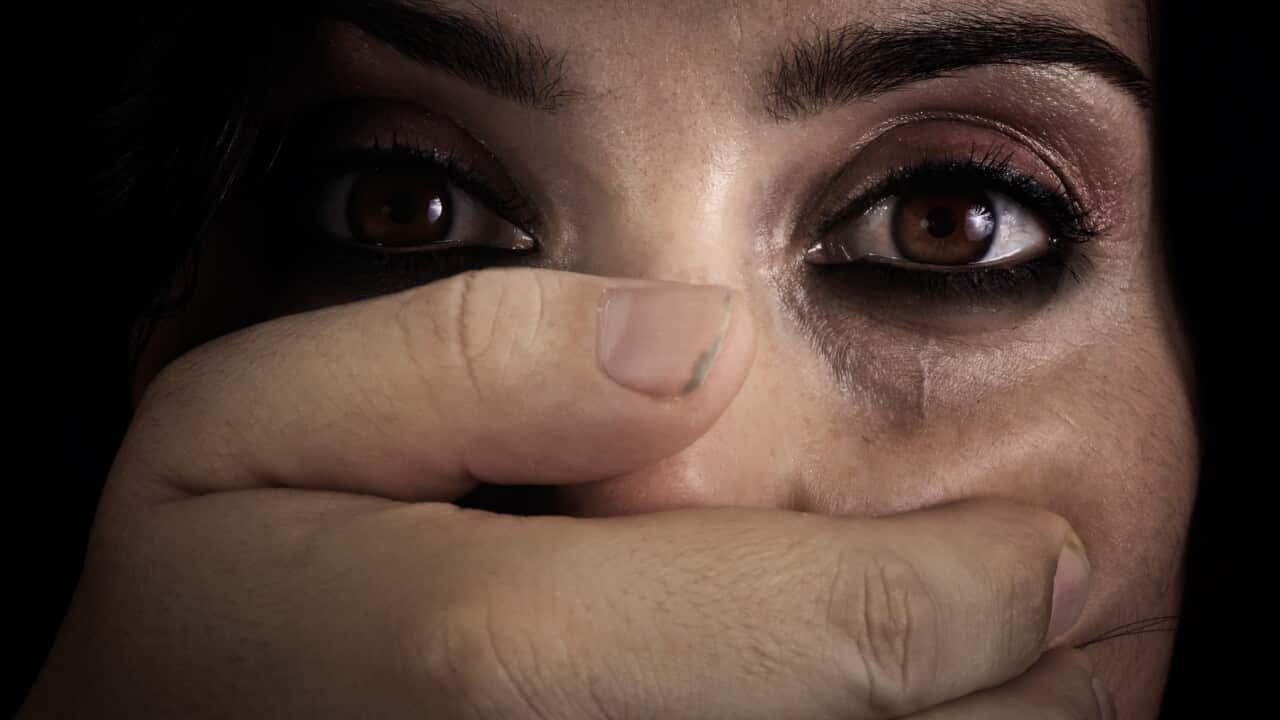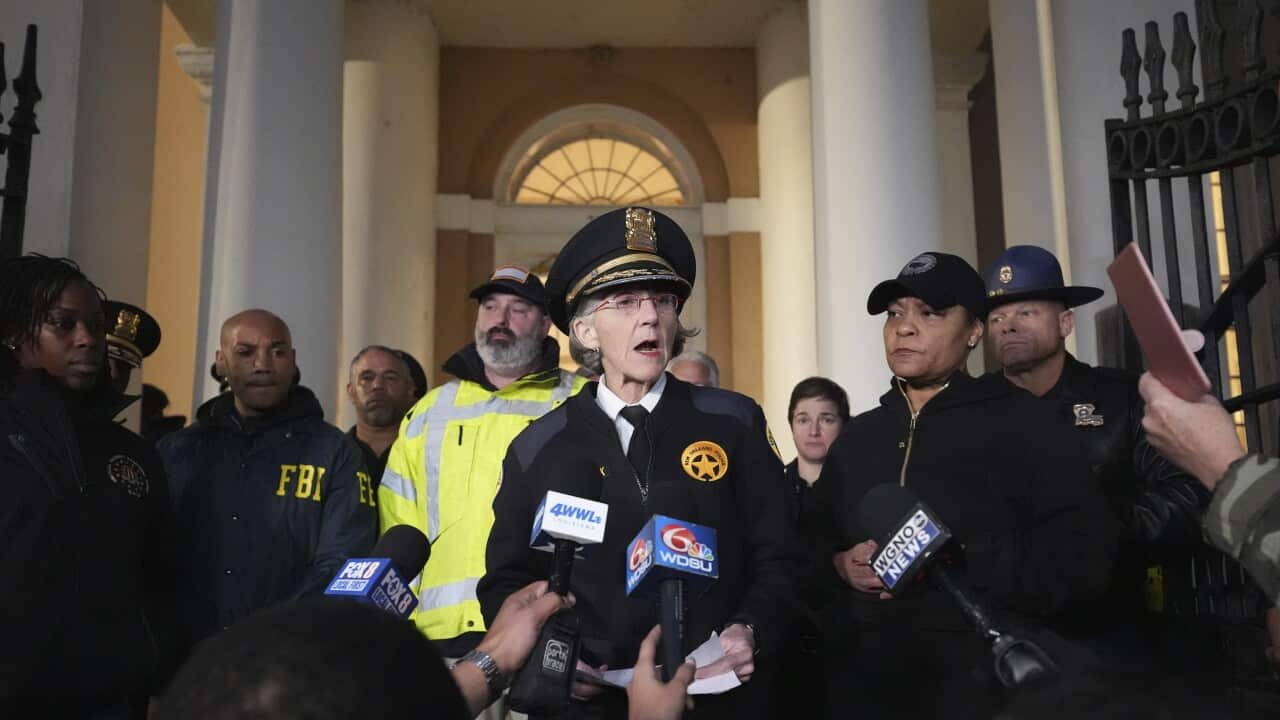English
"So the summer 23-24 has been quite a momentous one for the Great Barrier Reef. We've had continued ongoing outbreaks of Crown of Thorns starfish, particularly in the southern Great Barrier Reef. That's been ongoing for a few years now. And then we had two tropical cyclones that went across the reef."
That’s the voice of Dr Mike Emslie from the Australian Institute of Marine Science.
Australians all know about the Great Barrier Reef.
They know it’s the only structure on earth visible from space.
They know it has unique biodiversity.
They know it’s very special.
And they know it’s under threat.
"This was probably the worst bleaching event we've had in terms of the spatial extent of the really severe categories of bleaching. Certainly, it's the first time that the southern Great Barrier Reef has seen extensive widespread bleaching like we saw unfold this year."
Coral bleaching is caused when the sea gets too warm. The living coral expels the symbiotic algae so the coral turns white.
The coral isn’t dead - but it is under stress and in danger of dying and needs time to recover.
“And that's what we're not seeing at the moment. So if we can take meaningful action on curbing greenhouse gas emissions and reducing global warming, then yeah, the reefs do have a future.”
But warming water is not the only threat.
Crown of Thorns starfish are voracious killers which feed on coral.
They can have up to 21 arms, hundreds of toxin-tipped thorns, and a taste for coral.
Their spines are covered in a toxin which deters any other predator.
They can kill up to 90 per cent of the corals on an affected reef.
And the reef is also affected by cyclones, and flood waters flowing into the sea from the land lowering salinity.
Informing the public about the situation on the reef is one of the aims of the Master Reef Guide program, set up five years ago by marine biologist Fiona Merida.
She grew up in Melbourne, but now lives in Townsville, much closer to the Great Barrier's location - off the coast of Queensland.
She says most people are very aware of the Reef and what's going on there - but away from northern Queensland, it's a different story:
"When I come to the big cities and I watch people moving around, and I know the life of a big city, this nature and these sort of things get sort of pushed to the side of your brain as you're going through."
And that's where Master Reef Guides - or ambassadors - come in.
Ms Merida - who is now the Director of Education for the Great Barrier Reef Authority - realised that tourists were seeing the reef, but not understanding it.
At the same time, tourist operators were aware that they didn't know enough to answer all the visitors' questions - and more knowledgeable people were needed.
"So let's empower the best people on your staff with our knowledge, so they're a direct chain from our information to them, and they're professionals."
Master Reef Guides actually work for and with tourism operators, and they’re the ones tasked with educating and inspiring visitors.
As reef ambassadors they pass on up-to-date scientific and management information about the reef and explain what people can do to make a difference.
"What we focus on in education is this care, learn, act, share idea. And so our first step is trying to instil somewhere in people a care for the reef. And the care really comes from some form of understanding."
There are currently 123 Master Reef Guides located across the Great Barrier Reef Marine Park who've been through intensive training, learning from experts, from each other, and from traditional owners.
And that's what's passed on to visitors.
One of the longest-serving guides is Eric Fisher.
"This is the beautiful thing about tourism. It can create a global movement of people interested in the Great Barrier Reef, really caring for the Great Barrier Reef. They've gone to the reef. They've experienced it. They've seen it. They've loved it! I really hope my kids, my friends get a chance to see this."
Mr Fisher works on a custom-built 'floating lab' on Moore Reef, 50 kilometres off the coast of Cairns.
He's a professional marine biologist, and he says collecting data about the reef brings him what he describes as 'unfathomable joy'.
But his favourite thing is guiding snorkel tours of the reef, sharing his love for it, and telling stories about it.
"What we know is because we make people incredibly happy through story, right? We've made them really form a connection with the Great Barrier Reef. And if you've got a connection to the Great Barrier Reef - and First Nations People will tell you this, you know, over thousands of years - you are going to feel more empowered to do something to conserve this beautiful natural asset in the future."
He says the ultimate aim is for everyone to play their part in protecting the reef.
“The Great Barrier Reef is a beautiful, dynamic place that's having challenges; and the biggest challenge is climate change, and we need to take some serious action on that.”
Italian
"So the summer 23-24 has been quite a momentous one for the Great Barrier Reef. We've had continued ongoing outbreaks of Crown of Thorns starfish, particularly in the southern Great Barrier Reef. That's been ongoing for a few years now. And then we had two tropical cyclones that went across the reef."
Questa è la voce del dottor Mike Emslie dell'Australian Institute of Marine Science.
Tutti gli australiani conoscono la Grande Barriera Corallina.
E tutti sanno che è l'unica struttura terrestre visibile dallo spazio.
Sanno che ha una biodiversità unica.
Sanno che è molto speciale.
E sanno anche che è minacciata.
"This was probably the worst bleaching event we've had in terms of the spatial extent of the really severe categories of bleaching. Certainly, it's the first time that the southern Great Barrier Reef has seen extensive widespread bleaching like we saw unfold this year."
Lo sbiancamento dei coralli si verifica quando il mare diventa troppo caldo. Il corallo vivo espelle le alghe simbiotiche e diventa bianco.
Il corallo non è morto, ma è sotto stress, rischia di morire e ha bisogno di tempo per riprendersi.
“And that's what we're not seeing at the moment. So if we can take meaningful action on curbing greenhouse gas emissions and reducing global warming, then yeah, the reefs do have a future.”
Ma il riscaldamento delle acque non è l'unica minaccia.
Le stelle marine corona di spine sono voraci assassine che si nutrono di corallo.
Possono avere fino a 21 braccia, centinaia di spine con una punta tossica, e sono ghiotte di corallo.
Le loro spine sono ricoperte da una tossina che scoraggia ogni altro predatore.
Possono uccidere fino al 90% dei coralli di una barriera corallina.
La barriera corallina è anche colpita dai cicloni e dalle acque alluvionali che si riversano in mare dalla terraferma abbassando la salinità.
Informare il pubblico sulla situazione della barriera corallina è uno degli obiettivi del programma Master Reef Guide, istituito cinque anni fa dalla biologa marina Fiona Merida.
L'autrice è cresciuta a Melbourne, ma ora vive a Townsville, molto più vicina alla posizione della Grande Barriera, al largo della costa del Queensland.
Secondo la biologa, la maggior parte delle persone è consapevole della barriera corallina e di ciò che vi accade, ma lontano dal Queensland settentrionale la storia è diversa:
"When I come to the big cities and I watch people moving around, and I know the life of a big city, this nature and these sort of things get sort of pushed to the side of your brain as you're going through."
Ed è qui che entrano in gioco le Master Reef Guides, o ambasciatori.
Merida - che ora è direttrice della formazione per la Great Barrier Reef Authority - si è resa conto che i turisti vedevano la barriera corallina, ma non la capivano.
Allo stesso tempo, gli operatori turistici erano consapevoli di non conoscere abbastanza per rispondere a tutte le domande dei visitatori, e che era necessario avere persone più competenti.
"So let's empower the best people on your staff with our knowledge, so they're a direct chain from our information to them, and they're professionals."
Le Master Reef Guides lavorano in realtà per e con gli operatori turistici e sono quelle che hanno il compito di istruire e ispirare i visitatori.
Come ambasciatori della barriera corallina, trasmettono informazioni scientifiche e gestionali aggiornate sulla barriera corallina e spiegano cosa si può fare per fare la differenza.
"What we focus on in education is this care, learn, act, share idea. And so our first step is trying to instil somewhere in people a care for the reef. And the care really comes from some form of understanding."
Attualmente ci sono 123 Master Reef Guides in tutto il Parco Marino della Grande Barriera Corallina che hanno seguito una formazione intensiva, imparando dagli esperti, gli uni dagli altri e dai proprietari tradizionali.
E questo è ciò che viene trasmesso ai visitatori.
Una delle guide più longeve è Eric Fisher.
"This is the beautiful thing about tourism. It can create a global movement of people interested in the Great Barrier Reef, really caring for the Great Barrier Reef. They've gone to the reef. They've experienced it. They've seen it. They've loved it! I really hope my kids, my friends get a chance to see this."
Fisher lavora in un "laboratorio galleggiante" costruito su misura a Moore Reef, a 50 chilometri dalla costa di Cairns.
È un biologo marino professionista e dice che raccogliere dati sulla barriera corallina gli procura una gioia che definisce "insondabile".
Ma la cosa che preferisce è dirigere tour di snorkeling, per condividere il suo amore per e raccontare storie sulla barriera corallina.
"What we know is because we make people incredibly happy through story, right? We've made them really form a connection with the Great Barrier Reef. And if you've got a connection to the Great Barrier Reef - and First Nations People will tell you this, you know, over thousands of years - you are going to feel more empowered to do something to conserve this beautiful natural asset in the future."
L'obiettivo finale è che tutti facciano la loro parte per proteggere la barriera corallina.
“The Great Barrier Reef is a beautiful, dynamic place that's having challenges; and the biggest challenge is climate change, and we need to take some serious action on that.”




